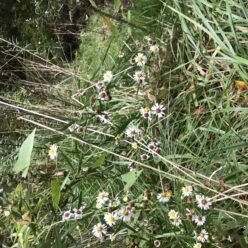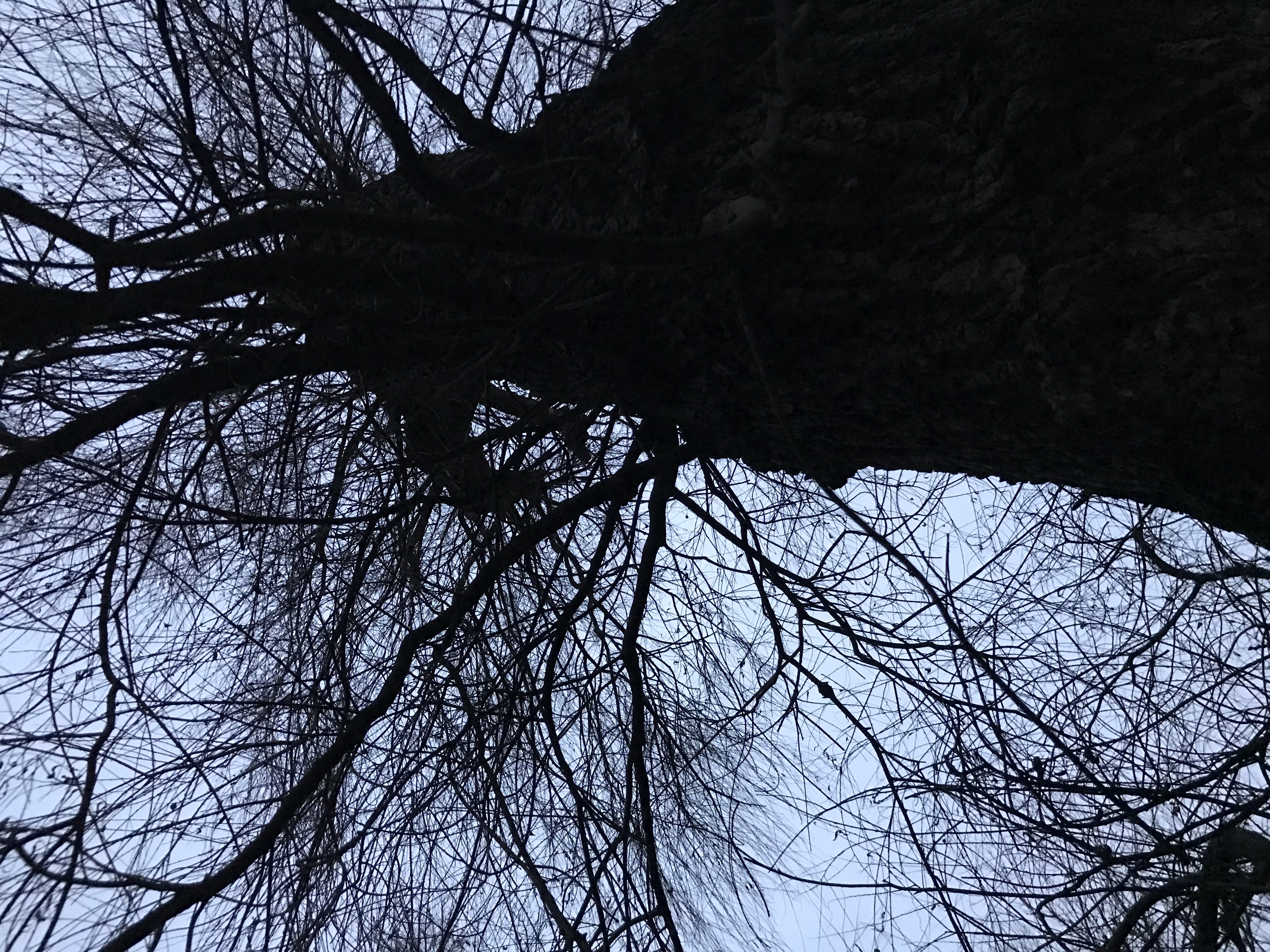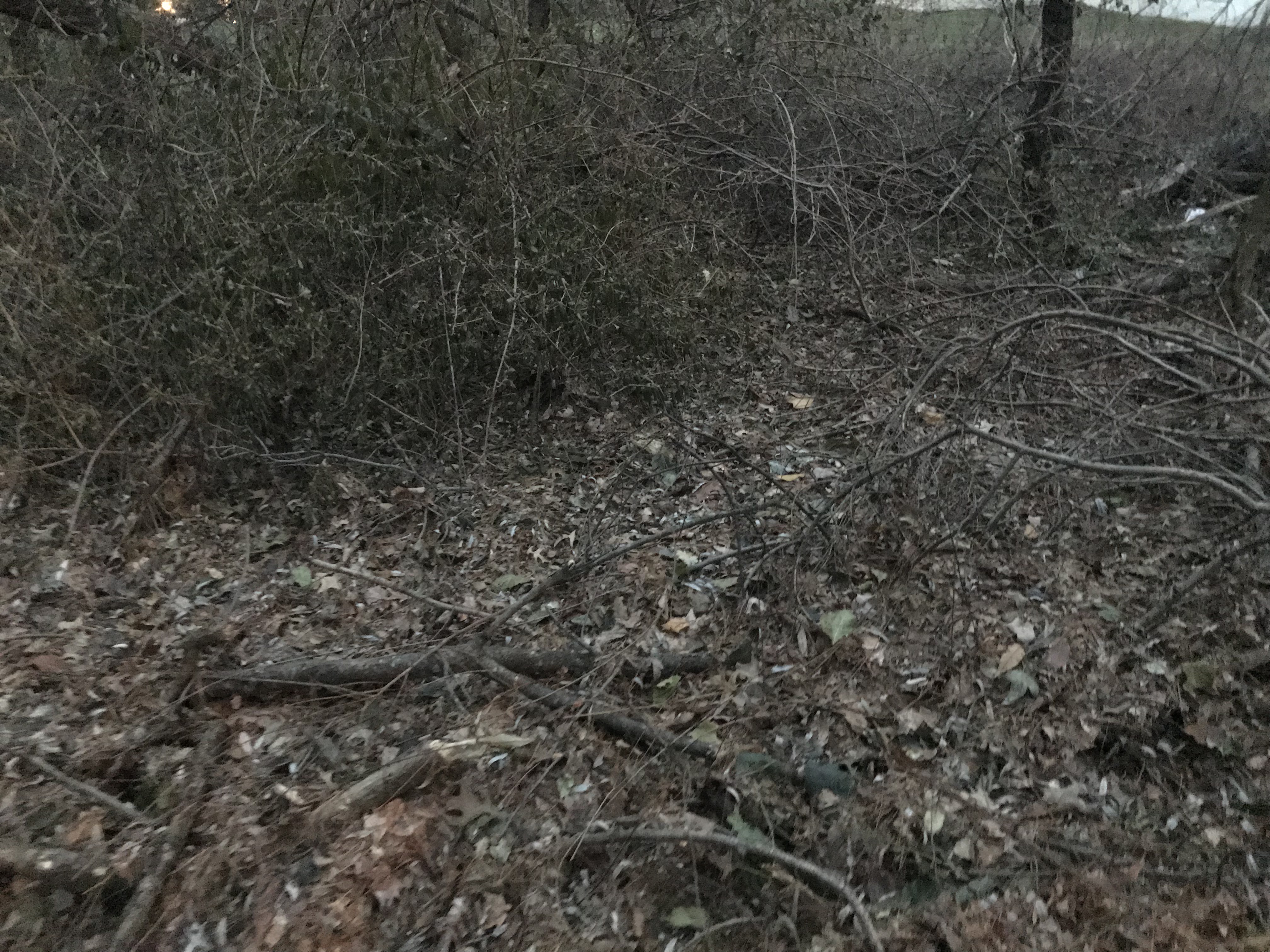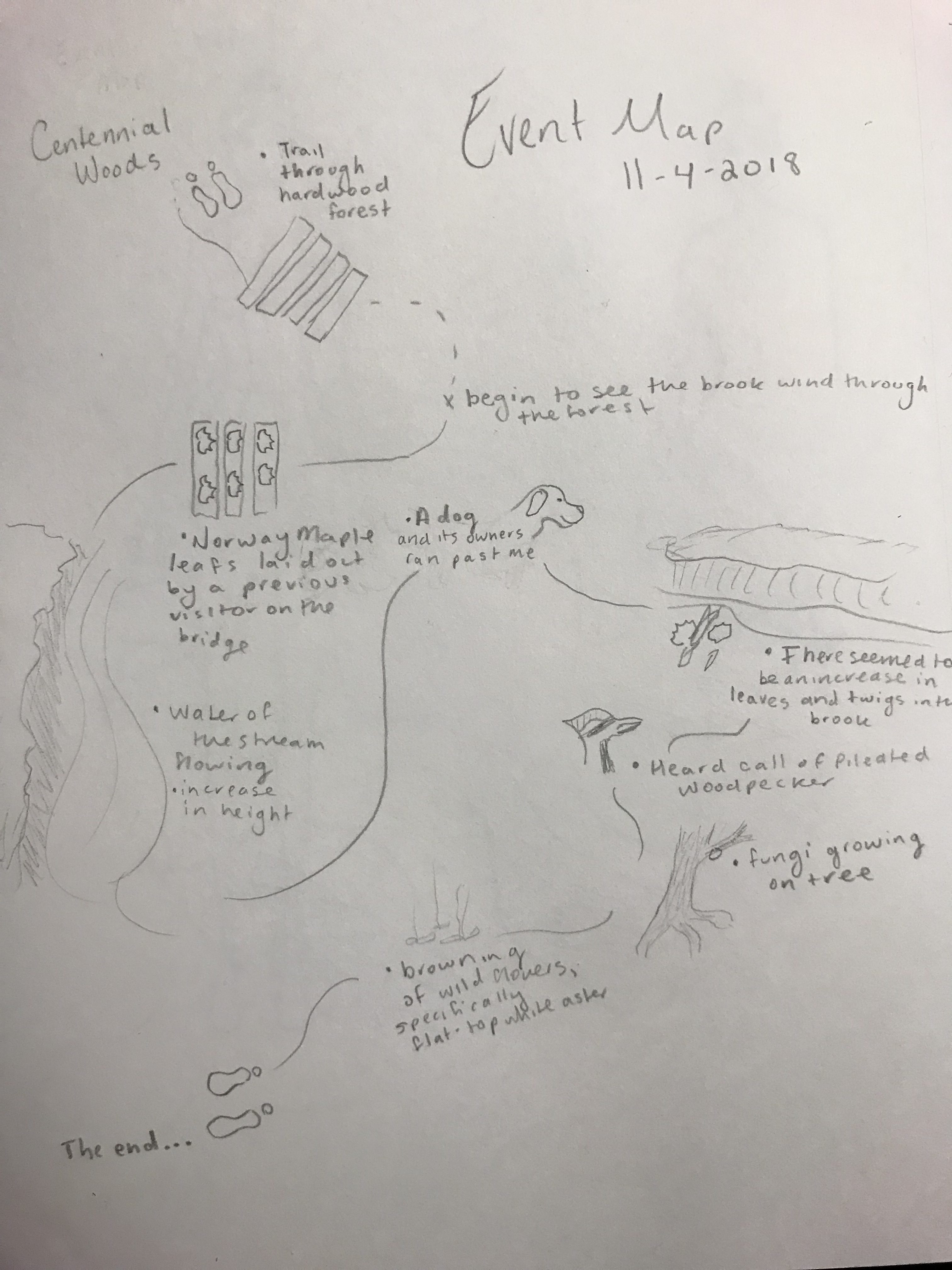While Green Brook is nestled between houses in suburbia, Centennial Brook exists in a city. It is strange that despite having less space between buildings in Burlington, they managed to carve out a piece of nature for all to enjoy while this land is almost all that is left of nature in North Caldwell. At Centennial woods, the peck of a Pileated Woodpecker can be heard, while back at home in Green Brook I saw and heard no birds.
The thrush at Green Brook is larger than that at Centennial brook as well. A hardwood stand surrounds Centennial brook whereas in North Caldwell, it is hickory and oak trees that make up the stands. Pines dominate the overstory at Centennial woods whereas oaks tower over the brook at Green Brook. A weeping willow marks its ground at Green Brook where there are no willows at my phenology site in Centennial Brook. The difference in temperature between the two sites is about 10-15 degrees Fahrenheit during the fall, which leads to a slightly different composition of tree species that can thrive.
The surroundings of Green Brook are houses with clear-cut yards while outside Centennial brook lies businesses and the UVM campus. The Gould Elementary school campus sits across from Green Brook, but closer to it are homes. Liberty field holds the town hall, two baseball diamonds, a basketball court, a playground, and a tennis court. There are none of these amenities surrounding Centennial brook. This leads to the existence of life at Green brook consisting of mainly mammals such as deer and rabbits, whereas Centennial brook is home to toads, salamanders, and frogs. Mammals exist near Centennial brook as well, but I have yet to come across one. At Green Brook, it is one of the only spots in town where deer are welcome, so they rest.
The main difference is the size of the slice of nature surrounding the brooks. Centennial woods is larger than the woods behind Liberty field could ever be. This key difference is what separates the two sites.




